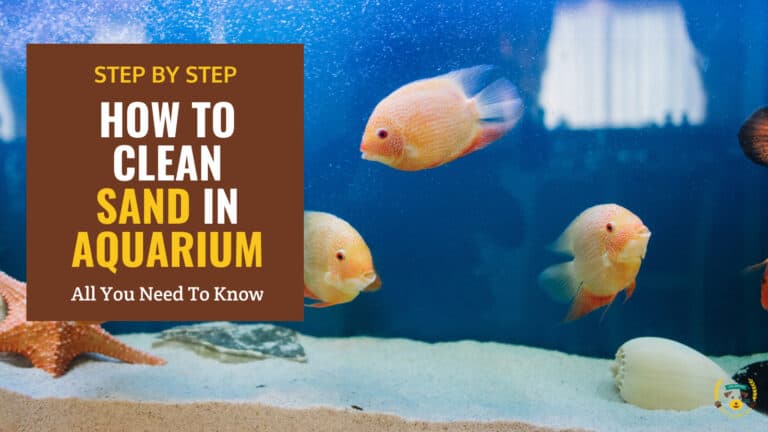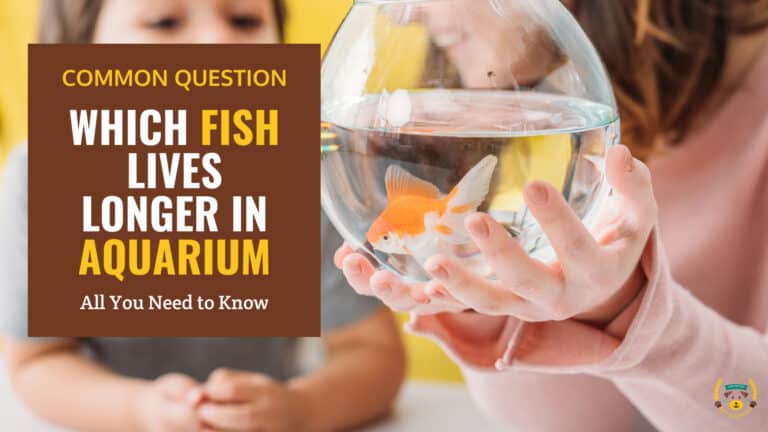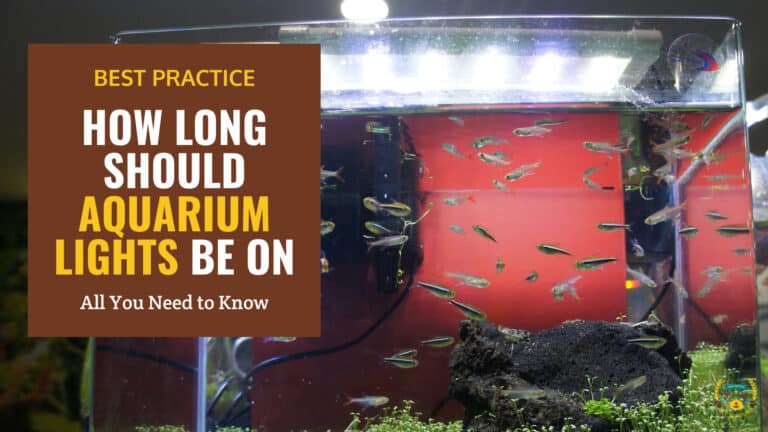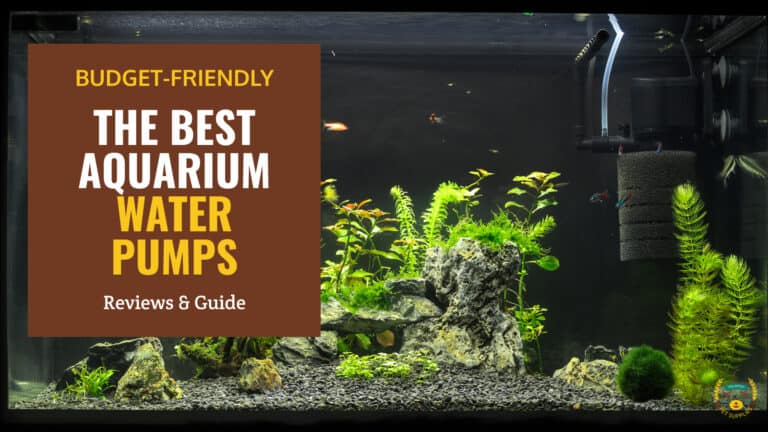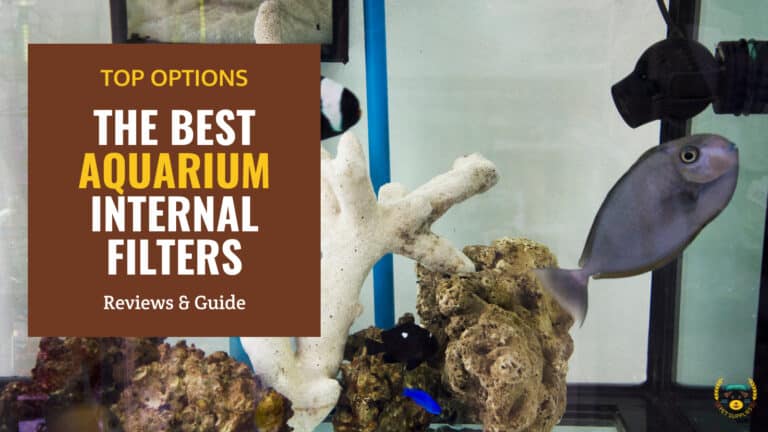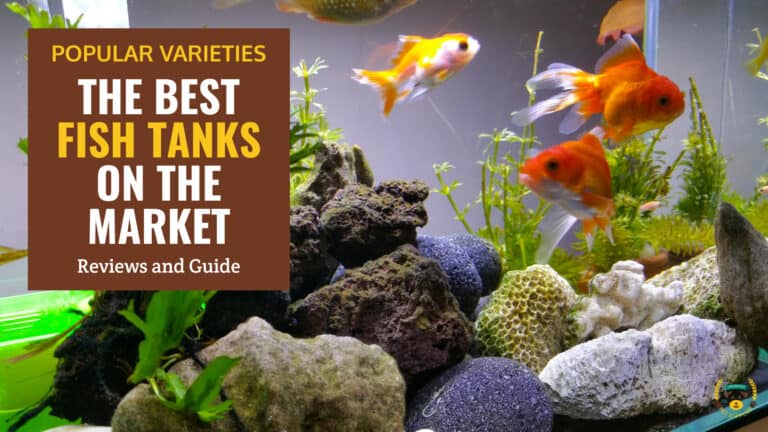How To Get Rid of Snails in Aquarium? 8+ Proven Methods
Last updated: March 27, 2024
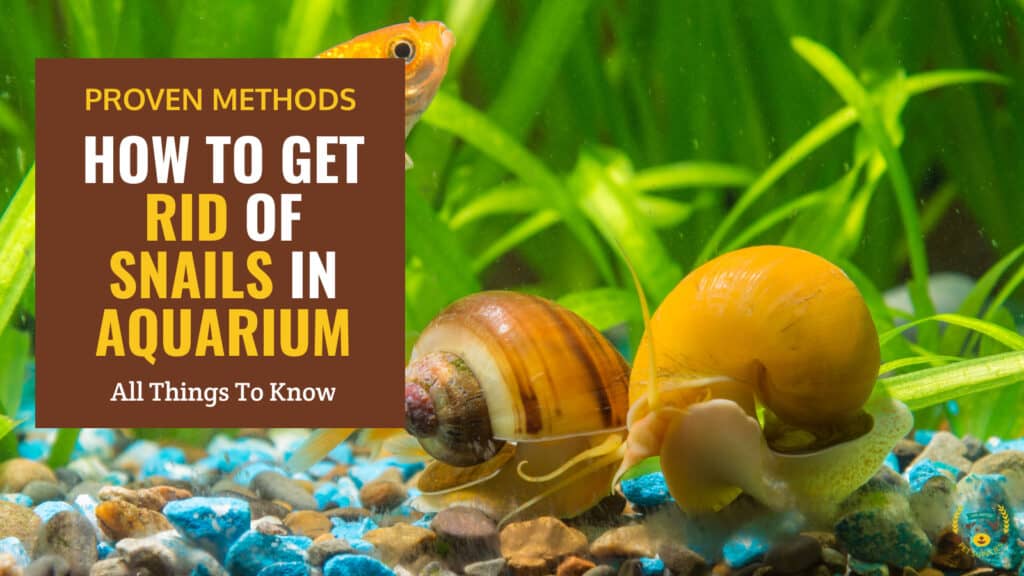
Summary
- Understand different aquarium snails and signs of infestation.
- Prevent infestations by quarantining new plants, feeding properly, maintaining clean tanks, and using snail-resistant plants.
- Remove existing snails manually (handpicking, traps), during water changes (eggs), or tank maintenance.
- Introduce natural predators like loaches and catfish for biological control. (Consider risks of chemical treatments)
- Prevent future infestations with regular maintenance, controlling live food sources, and properly disposing of unwanted snails.
You've meticulously crafted your aquarium, carefully selecting vibrant fish and lush plants. But then, you notice small, slimy intruders gliding along the glass and multiplying at an alarming rate. Snails have invaded your underwater paradise!
While a few snails can be beneficial, an unchecked population can quickly spiral out of control. They compete with your fish for food, produce unsightly waste and may even damage delicate plants. It's crucial to address the snail problem before it gets out of hand.
In this article, we will guide you through different methods of treating a snail-infested tank and provide ways to prevent them from ever conquering your beloved aquarium again.
Understanding the Different Types of Aquarium Snails
To effectively combat snails, you need to know your enemy. Common aquarium snails include the following:
- Ramshorn Snails: These small, spiral-shelled snails are often introduced via live plants.
- Pond Snails: With their tear-drop shaped shells, pond snails are known for their rapid reproduction.
- Malaysian Trumpet Snails: These cone-shaped burrowers can be beneficial in small numbers but problematic in large populations.
- Bladder Snails: Named for their balloon-like appearance, bladder snails are prolific breeders.
Each species has its quirks, but all can become a nuisance if left unchecked.
Signs of a Snail Infestation in Your Aquarium
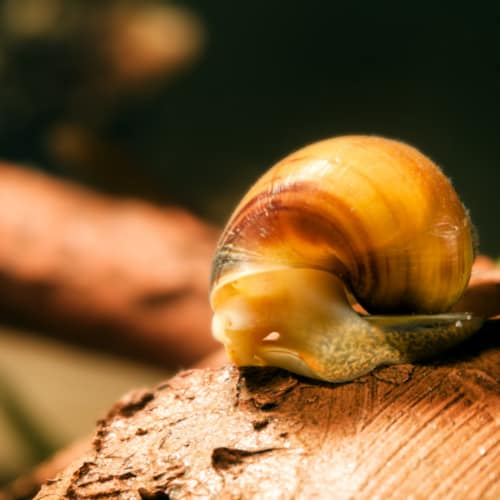
How do you know if you have a snail problem? Keep an eye out for these telltale signs:
- An increasing number of snails visible on the glass, decorations and plants
- Clusters of small, jelly-like eggs on aquarium surfaces
- Damaged or eaten plants
- Excessive waste accumulation in the substrate
If you notice any of these signs, it's time to take action. The good news? With the right knowledge and techniques, you can successfully manage your snail population and restore balance to your aquatic ecosystem.
Prevention Measures
Snail infestations often catch aquarium owners off guard. However, with proactive steps, you can minimize the risk of unwanted guests. Prevention is key to maintaining a thriving, snail-free tank.
Quarantining New Plants and Decorations
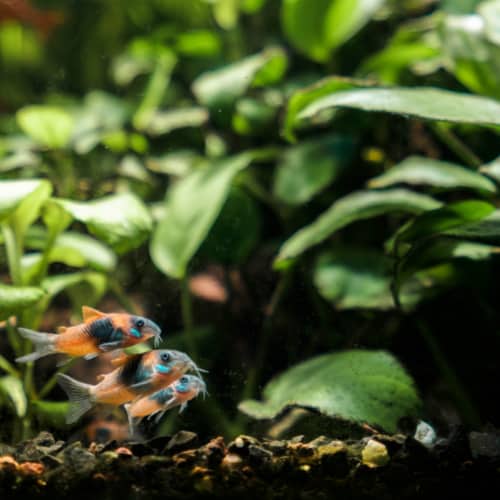
One of the most common ways snails hitchhike into your aquarium is on live plants and decorations. Before adding anything new to your tank, quarantine it in a separate container for at least a week. This allows time for any snail eggs to hatch, making them easier to spot and remove.
To quarantine plants:
- Rinse them thoroughly under running water
- Inspect leaves and stems for snails or eggs
- Place plants in a separate tank or container with treated water
- Monitor for any signs of snails or eggs
Avoiding Overfeeding Your Fish
Overfeeding is a surefire way to fuel a snail population boom. Excess food sinks to the bottom, providing a buffet for snails. Stick to feeding your fish only what they can consume within a few minutes, once or twice a day.
If you notice uneaten food accumulating, cut back on the amount you're providing. Regular water changes can also help remove excess nutrients that contribute to snail growth.
Maintaining Proper Aquarium Hygiene
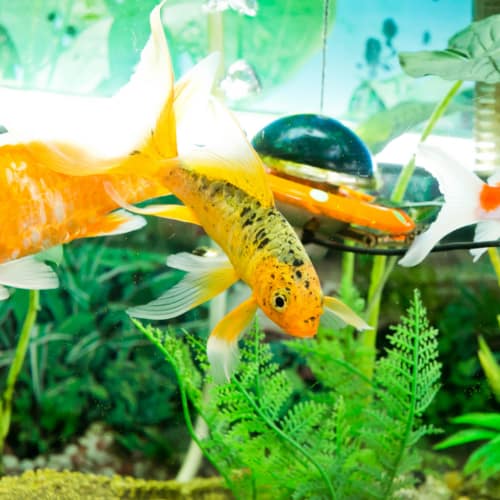
A clean tank is a happy tank - and one that's less likely to attract snails. Perform regular water changes, vacuuming the substrate to remove debris and waste. Also, keep an eye on your filtration system, cleaning or replacing components as needed.
Don't forget to clean decorations and equipment, like heaters and tubes, where snails might lay eggs. A little elbow grease goes a long way in keeping your aquarium snail-free.
Using Snail-Resistant Plants
Some aquatic plants are less appealing to snails than others. By incorporating these into your aquascape, you can create a natural barrier against infestations. A few snail-resistant options include:
These hardy plants not only deter snails but also add beauty and oxygen to your tank. Choose species that suit your aquarium's size, lighting and water parameters for the best results.
Now that your aquarium is adorned with beautiful plants and teeming with life, you might be wondering about the ideal lighting setup. A recommended daily light cycle for aquariums plays a vital role in regulating fish activity, promoting healthy plant growth, and preventing algae outbreaks.
Manual Removal Methods
Sometimes, despite your best prevention efforts, snails still find their way into your aquarium. When that happens, it's time to take matters into your own hands - literally. Manual removal methods are an effective way to keep snail populations under control.
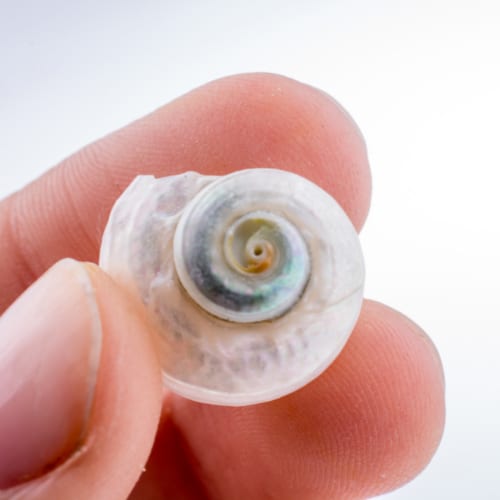
Hand Picking Snails from Your Aquarium
The simplest way to remove snails is to pluck them out by hand. This method works best for larger snail species, like apple or mystery snails.
Here's how to do it:
- Wait until the snails are active and visible on the glass or decorations.
- Reach in and carefully grasp the snail's shell, pulling it out of the water.
- Place the snail in a separate container for disposal or relocation.
Be sure to check under leaves and in crevices where snails might hide. Patience and persistence are key.
Using Lettuce or Cucumber as Snail Traps
Snails have a weakness for fresh veggies, which you can use to your advantage. Lettuce leaves or cucumber slices make excellent snail traps.
To create a trap:
- Weigh down a piece of lettuce or cucumber with a small rock or aquarium-safe weight.
- Place the baited trap in your aquarium before turning off the lights for the night.
- In the morning, remove the trap along with any snails clinging to it.
- Repeat the process until you see a significant reduction in the snail population.
This method is particularly useful for catching smaller snail species that are difficult to spot or grab by hand.
Siphoning Snail Eggs during Water Changes
Snails are prolific breeders, laying clusters of eggs on aquarium surfaces. Removing these eggs is crucial to keeping the population in check.
During your regular water changes, use a siphon or gravel vacuum to target areas where snails lay their eggs, such as:
- On the underside of leaves
- In the substrate, especially near the glass
- On decorations and equipment
Siphon out the eggs along with the water, disposing of them outside the aquarium. Be thorough, as even a few missed eggs can lead to a new generation of snails.
Removing Snails during Tank Maintenance
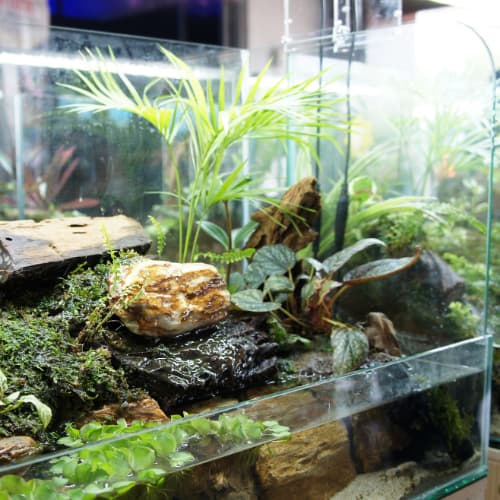
Tank maintenance presents an opportunity to perform a more comprehensive snail removal. As you clean and rearrange your aquarium, keep an eye out for snails and eggs.
- Inspect and clean each decoration before putting it back in the tank.
- Remove snails from plants by gently rubbing them off or dipping the plant in a saltwater solution.
- Vacuum the substrate thoroughly, paying extra attention to areas along the glass where snails tend to congregate.
By incorporating snail removal into your regular maintenance routine, you can stay ahead of the problem and prevent infestations from taking hold.
Manual removal methods may require ongoing effort, but they're a safe and effective way to control snail populations without harming your fish or plants. Stay vigilant, and remember: every snail removed is one less contributing to the infestation.
Biological Control Methods
When manual removal methods aren't enough to control your snail population, it's time to call in reinforcements. Biological control involves using natural predators to keep snail numbers in check. This hands-off approach can be an effective long-term solution.
Introducing Natural Predators: Loaches and Catfish
Certain fish species have a taste for snails, making them excellent allies in your battle against infestations. Loaches and catfish are among the most popular snail-eating fish.
Some very effective snail predators include the following species:
- Clown Loaches
- Yoyo Loaches
- Zebra Loaches
- Striped Raphael Catfish
- Dwarf Chain Loaches
Before adding any new fish to your aquarium, research their specific requirements. Make sure your tank is large enough and has the appropriate water parameters to support them.
Assassin Snails: A Snail-Eating Solution
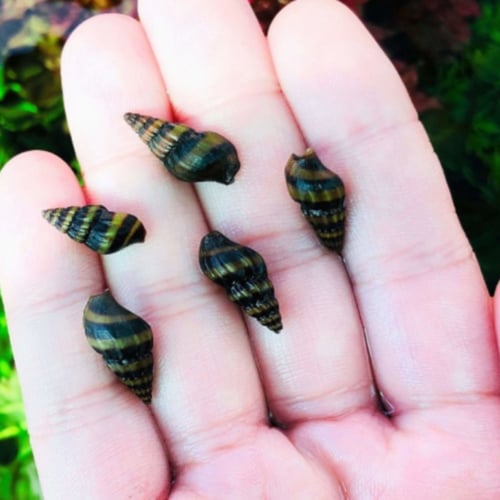
Fight fire with fire - or in this case, snails with snails. Assassin snails are a species of freshwater snail that prey on other snails. They're small, attractive and efficient hunters.
Assassin snails actively seek out and consume pest snails. They also have a slow reproduction rate, so they won't overpopulate your tank and are peaceful towards fish and plants.
Introduce assassin snails gradually, starting with one snail per 10 gallons of water. Keep an eye on their progress and add more if needed.
Cautions and Considerations When Using Biological Control
While biological control can be effective, it's not without risks. Before introducing snail predators, consider the following:
- Ensure your new additions are compatible with your existing fish and invertebrates.
- Be prepared to provide alternative food sources once the snail population declines.
- Monitor your tank closely for signs of stress or aggression.
- Have a plan for removing or rehoming predators if necessary.
It's also important to note that biological control is not a quick fix. It may take several weeks or even months to see significant results. Patience and consistency are crucial.
Combining biological control with manual removal and prevention methods can create a well-rounded approach to snail management. By working with nature, you can achieve a balanced, thriving aquarium ecosystem.
Chemical Treatments
When manual removal and biological control methods fail to curb your snail population, chemical treatments offer a more aggressive approach. These solutions can effectively eliminate snails, but they come with risks. Proceed with caution and always follow the manufacturer's instructions.
Using Copper-Based Medications
Copper is a potent molluscicide, making it an effective snail killer. Many aquarium medications contain copper sulfate as the active ingredient.
To use copper-based treatments:
- Remove any invertebrates, such as shrimp or crabs, as copper is toxic to them.
- Follow the dosage instructions carefully, as overdosing can harm your fish.
- Monitor your aquarium closely for any adverse reactions.
- Perform water changes and use activated carbon to remove the medication after the treatment period.
Keep in mind that copper can also harm beneficial bacteria in your filtration system. Be prepared to support your tank's cycle with bacterial supplements if necessary.
Applying Snail-Specific Treatments
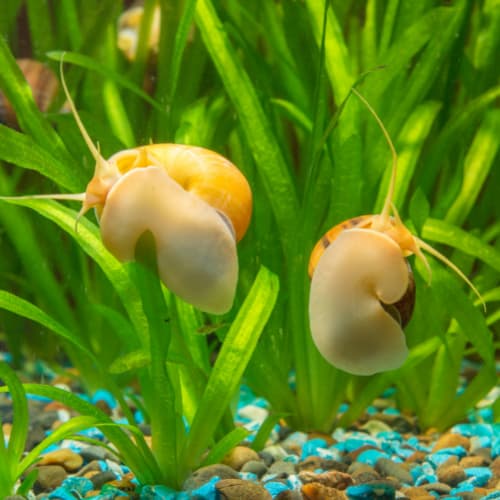
Some companies offer snail-specific treatments that claim to eliminate snails without harming fish or plants. These products often use natural ingredients like plant extracts or essential oils.
When choosing a snail-specific treatment:
- Read reviews and research the product's effectiveness and safety.
- Check that the treatment is compatible with your tank's inhabitants.
- Follow the application instructions precisely.
- Be patient, as some treatments may require multiple applications to see results.
As with any chemical treatment, watch your aquarium closely for signs of distress or adverse reactions.
Risks and Precautions when Using Chemical Treatments
Chemical treatments are not without risks. Before reaching for a bottle, consider the following:
- Some snail species, like nerites or mystery snails, may be desirable additions to your tank. Chemical treatments will kill them, along with pest snails.
- Copper and other harsh chemicals can linger in your aquarium, potentially causing long-term health issues for your fish and plants.
- Overuse of chemical treatments can lead to resistance, making future infestations harder to control.
- Dead snails can quickly foul your water, causing ammonia spikes and other problems. Remove them promptly and perform water changes as needed.
If you choose to use chemical treatments, always do so as a last resort and with extreme care. Properly research any product before introducing it to your aquarium, and be prepared to take swift action if complications arise.
Remember, an ounce of prevention is worth a pound of cure. By combining regular manual removal, biological control, and good aquarium hygiene, you may never need to resort to chemical warfare against snails.
Preventing Future Snail Infestations
You've fought the good fight and won, but the war against snails is never truly over. Preventing future infestations is key to maintaining a healthy, snail-free aquarium. With a few simple habits and a watchful eye, you can keep those slimy invaders at bay.
Regular Maintenance and Monitoring
Consistency is your greatest ally in the battle against snails. Establish a regular maintenance routine that includes:
- Weekly water changes of 10-20% of your tank's volume
- Vacuuming the substrate to remove debris and uneaten food
- Cleaning the aquarium internal filters and other equipment as needed
- Pruning dead or decaying plant matter
During maintenance, take the time to inspect your aquarium for any signs of snails or eggs. The earlier you catch an infestation, the easier it is to control.
Controlling Live Food Sources
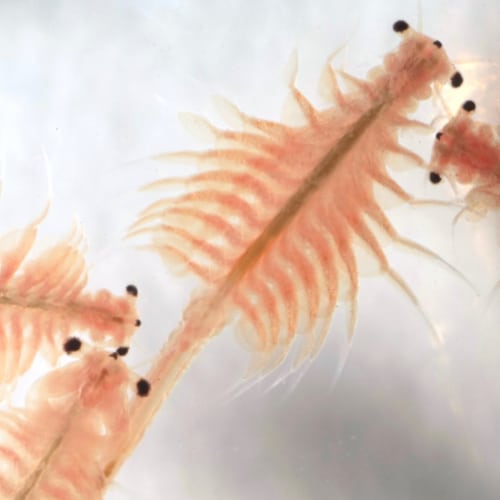
Snails thrive on excess food, especially live foods like bloodworms or brine shrimp. While these treats are great for your fish, they can also fuel a snail population explosion.
To minimize the risk:
- Offer live foods sparingly, no more than once or twice a week
- Remove any uneaten food promptly
- Consider using frozen or freeze-dried alternatives
Remember, a well-fed snail is a breeding snail. By limiting their food sources, you can keep their numbers in check.
Properly Disposing of Unwanted Snails
When removing snails from your aquarium, it's crucial to dispose of them responsibly. Releasing them into the wild can introduce invasive species and upset local ecosystems.
Instead:
- Crush the snails and dispose of them in the trash
- Give them to a friend with a puffer fish or other snail-eating creature
- Contact your local fish store to see if they can take them off your hands
Never flush snails down the toilet or release them into waterways. A little extra effort can prevent a lot of ecological damage.
Frequently Asked Questions
You've learned a lot about snail infestations and how to combat them, but you might still have some lingering questions. Fear not! We've compiled a list of the most common queries about aquarium snails to help you become a true snail-fighting pro.
Are all aquarium snails harmful?
Not all snails are created equal. Some species, like nerite snails or mystery snails, can be beneficial additions to your tank. They help clean up algae and debris, keeping your aquarium looking its best. The key is to control their population and prevent them from overwhelming your ecosystem.
Can snails survive out of water?
Believe it or not, some snail species can survive outside of water for short periods. Pond snails, for example, can seal themselves inside their shells and endure dry spells.
However, most aquarium snails need a constant aquatic environment to thrive. If you find snails crawling above your water line, it might be a sign of poor water conditions.
How quickly do aquarium snails reproduce?
Aquarium snails are prolific breeders, which is why infestations can happen so quickly. Many species, like ramshorn and bladder snails, are hermaphroditic, meaning they can reproduce without a mate.
A single snail can lay hundreds of eggs at a time, which hatch in just a few weeks. Talk about a family reunion!
Will snails harm my live plants?
Some snail species, particularly larger ones like apple snails, can munch on live plants. They have a taste for tender leaves and stems, which can leave your carefully cultivated aquascape looking like a salad bar. Stick to smaller, less voracious species, or provide plenty of alternative food sources to keep your plants safe.
Can I release aquarium snails into the wild?
Releasing aquarium snails into the wild might seem like a humane solution, but it's a big no-no. Many aquarium snail species are invasive and can wreak havoc on local ecosystems. They can outcompete native species, spread diseases and disrupt the delicate balance of nature.
Always dispose of unwanted snails responsibly, either by giving them away or humanely euthanizing them.
Can I keep different species of snails together in the same aquarium?
While it's possible to keep multiple snail species together, it's essential to research their compatibility first. Some species, like assassin snails, prey on other snails and can quickly decimate their populations.
Others, like apple snails and mystery snails, may compete for resources or even breed with each other, leading to hybrid offspring.
To maintain a balanced and harmonious tank, stick to species that have similar requirements and won't interfere with each other's well-being.
Final Thoughts
Congratulations on making it through the gauntlet of snail control! By now, you've got a well-stocked arsenal of strategies to keep your aquarium free from these slimy invaders. The most effective approach is a combination of techniques tailored to your unique setup, including manual removal, biological control and prevention.
Remember, an ounce of prevention is worth a pound of cure. By being proactive and implementing preventive measures, you can save yourself a world of headaches down the line. Regular maintenance, such as water changes, substrate vacuuming and filter cleaning, is crucial for maintaining a thriving aquatic ecosystem.
If you have any questions, don't hesitate to contact us.

